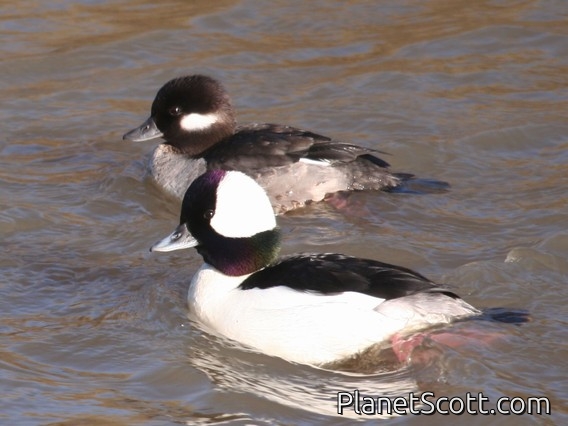Bufflehead (Bucephala albeola)

Bufflehead (Bucephala albeola)
×


Bufflehead (Bucephala albeola)
About Bufflehead (Bucephala albeola)
- Kingdom: Animals
- Phylum: Chordates
- Class: Birds
- Order: Anseriformes
- Family: Swans, Geese, and Ducks
The bufflehead is a small sea duck of the genus Bucephala, the goldeneyes. It breeds in Alaska and Canada and migrates in winter to southern North America. This species was first described by Carl Linnaeus in his landmark 1758 10th edition of Systema Naturae as Anas albeola.
Source: Wikipedia
Visits
-
-
2006-02-20
Pescadero Marsh, United States of America -
2007-01-01
Candlestick Park, United States of America -
2007-04-10
Ejido Lagoon, United States of America -
2008-01-17
Mission Creek, United States of America -
2009-11-29
Heron's Head Park, United States of America -
2010-01-01
Arrowhead Marsh, United States of America -
2010-01-03
Sacramento National Wildlife Refuge, United States of America -
2010-05-29
Saint George Island, United States of America -
2012-04-14
Heron's Head Park, United States of America -
2012-12-13
Heron's Head Park, United States of America -
2012-12-16
Lake Merced , United States of America -
2013-03-17
Lake Merced , United States of America -
2013-03-23
Coyote Point County Park--harbor and marsh, United States of America -
2013-03-30
Heron's Head Park, United States of America -
2013-11-29
Lake Merced , United States of America -
2013-12-01
Heron's Head Park, United States of America -
2014-01-01
Heron's Head Park, United States of America -
2014-01-11
Heron's Head Park, United States of America -
2014-01-14
Candlestick Park, United States of America -
2014-02-15
Lake Merced , United States of America -
2014-02-16
Golden Gate Park - North Lake, United States of America -
2014-03-04
Chabot Regional Park, United States of America -
2014-03-11
Elkhorn Slough, United States of America -
2014-12-21
Arrowhead Marsh, United States of America -
2014-12-27
Heron's Head Park, United States of America -
2015-01-01
Candlestick Park, United States of America -
2015-01-10
Half Moon Bay - Pillar Point, United States of America -
2015-01-18
Tilden Regional Park, United States of America -
2015-01-19
Lake Merced , United States of America -
2015-01-20
Arrowhead Marsh, United States of America -
-
-
-
-
-
-
-
-
-
-
-
-
-
-
-
-
-
-
-
-
-
-
-
-
-
-
-
-
-
-
-
-
-
-
2025-12-16
Lake Merced , United States of America -
2026-01-07
Heron's Head Park, United States of America



